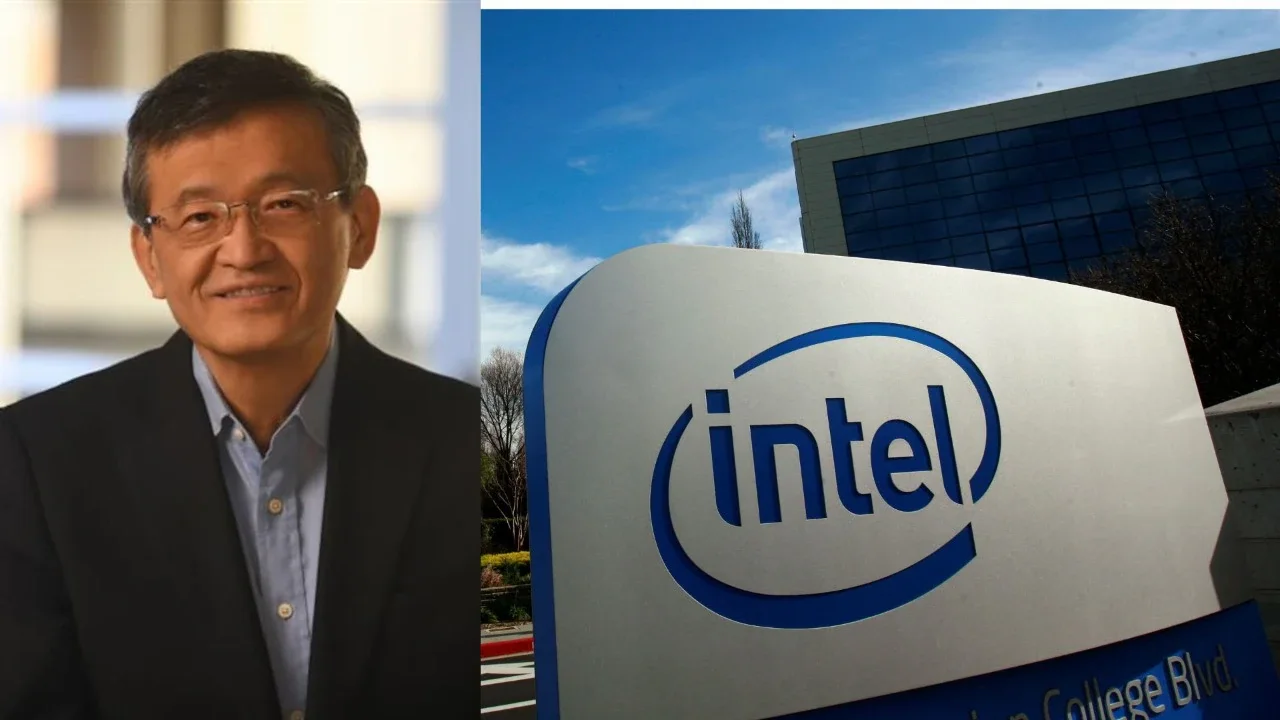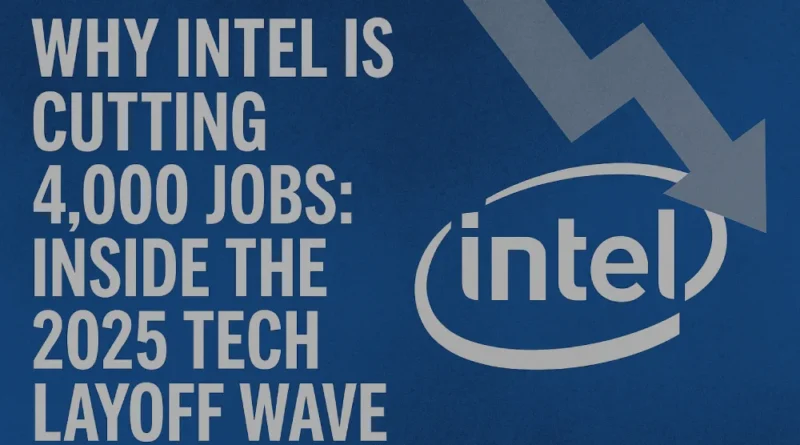Why Intel Is Cutting 4,000 Jobs: Inside the 2025 Tech Layoff Wave
In a move that has sent ripples through the tech industry, Intel, the U.S.-based semiconductor giant, announced plans to cut approximately 4,000 jobs by mid-July 2025, with 2,500 additional layoffs recently added to the tally. This significant workforce reduction, part of a broader restructuring effort under new CEO Lip-Bu Tan, underscores the challenges facing one of the world’s leading chipmakers. As Intel grapples with declining market share and financial pressures, this article explores the layoffs’ implications, offers unique insights, and provides local context for Indian readers, drawing on credible sources to deliver an engaging and informative perspective.
The Layoff Announcement: A Closer Look
The latest layoffs of Intel were announced July 14, 2025, to cut approximately 4,000 jobs across its business in the United States with 2,400 jobs axed in Oregon alone; five times more than what was first reported. The layoffs come after a previous announcement in August 2024, when Intel hinted at shrinking thousands of positions and halting dividend payment to deal with losses in finances. The news caused the share of the company to drop by more than 12 averages due to the fear of the investors concerning the status of Intel in the highly competitive semiconductor market.
The layoffs hit not just technicians, engineers, and mid-level managers, but also the mid-level management, despite previous statements that the layoffs will be focused on the management mostly. This extensive nature has generated debates on such platforms as X with members sharing their shock with the number of cuts and its effects on the Intel employees. The re-organization is one of the elements in the approach of Intel to adjust its operations, reduce its expenditure, and recover ground that it has lost to rivals such as AMD and TSMC.
Why Is This Happening? Industry and Financial Context
The layoffs of Intel took place during the rough time of the semiconductor industry. The company has been struggling to stay at the top as far as the chip manufacturing market is concerned; this is especially in a market where there is a high demand for AI-driven chips. Other competitors such as Nvidia have been able to take advantage of the AI boom whereas Intel finds it hard to move out of its CPU manufacturing business to make more radical high-performance AI/cloud-computing chips. Also, Intel foundry division, which is hoped to manufacture chips on behalf of other corporations, has not generated much sales, and this further presents pressure on the account.
Intel had 1 percent fewer revenues year over year in 2024 and the company posted an operating loss of 7 billion in its foundry weakened segment. Its high-profile initiative to spend more than 100 billion dollars in new plants in the American and European continents, with the help of 8.5 billion dollars CHIPS Act funding, has not yielded, which is why the company decided to implement cut-downs. This is because the layoffs are a calculated step in ensuring that Intel works in the aspect of its financial and long-term objectives.
Local Context: Impact on India’s Tech Ecosystem
The layoff by Intel means a lot to the Indian readers as the company is hugely present in India. In India, Intel has thousands of professionals working in such places as Bengaluru and Hyderabad, where the company has its research and development facilities where it conducts achievement in the chip development, software and artificial intelligence. Although the layoffs that have just happened are largely concentrated in the United States, on X, there are now concerns of Indian employees showing anxiety over the possibility of ripple effects. Intel India also hires more than 10,000 workers in 2023 and works on the development of 5G, AI, and IoT technologies.
The ambitions of the state of India in the field of semiconductors, supported by the government program of $10 billion Semiconductor Mission, depends on the international community, such as Intel with technology transfer and cooperation. The layoff might be a sign that Intel is planning a change in its global outlook and this may also influence its R & D investment in India. But the flourishing technology industry in India whereby organizations such as Tata Electronics and Micron open up their chip-making plants can provide displaced Intel workers with a chance to shift to new jobs in the country.
The Indian tech workforce is also riding on general industry trends. The layoffs in other technology companies like Google and Mata have increased the insecurity of jobs. However, the requirements of skilled AI, semiconductors, and cloud computing engineers are strong in India, and the salary of semiconductor engineers is increasing and ranges to around 20-40 lakhs per year in Bengaluru on average as per Glassdoor sources. Indian professionals who want to upgrade to AI and chip design as a form of strategic reaction to global trends, would do so.

Unique Insights: The Human and Industry Toll
In addition to the statistics, layoffs of Intel indicate the human effect of restructuring in companies. The job insecurity of engineers or technicians who are traditionally regarded as the engine of change within Intel is posing a problem in a job market that is gradually becoming AI and skills specific. X posts indicate employee resentments and some users are raising concerns about the statement made by Intel that suggests that lay offs were only restricted to the mid management officers considering the fact that technical positions are involved as well. This feeling reflects a more general issue that is ensuring employee morale in the process of change.
Industrially, the layoffs mean a day of reckoning to old-time chipmakers. Semiconductor market would reach $1 trillion by 2030 based on AI and 5G, according to McKinsey. Nonetheless, the fact that Intel has not fully embraced state of art manufacturing technologies (e.g., 3nm nodes) as TSMC has done has dented its position in the competition. The downsizing can enable Intel to channel resources into the emerging technologies, yet, it could be risking losing talent to competition, which has been voiced in the industry reviews.
The Bigger Picture: What’s Next for Intel?
Ceo uu Lip-Bu Tan is betting on a turnaround at Intel. Tan has a long experience in the semiconductor sector and wants to transform Intel as the leader in the field of AI and foundry businesses. The $20 billion investment by the firm to open chip plants in Ohio and the collaboration with Amazon to manufacture custom AI chips are a sign of long-term perspective. Nevertheless, the direct pain of job loss and suspension of dividends is rattling that investor suspense, and the stock at Intel has dropped together 20 percentage point year to date through July 2025.
In the case of employees, it is a sign that they should be adaptable. More certifications in Artificial intelligence, machine learning, and chip design, which are provided by the sites such as Coursera and IITs in India, can make an employee more hireable. In the case of Indian technocrats, the possibility of working with the upcoming chip industries or startups in Bengaluru Silicon Valley can help them avoid the cutbacks associated with global retrenchments.
Engaging the Reader: Why This Matters
You are an engineer with Intel working on the next-gen chips in Bengaluru and you read about the thousands of layoffs halfway across the world. The question mark is visceral as is the potential. Change in the tech industry requires persistence- either you are an engineer, a business manager, or a student who has set his/her eyes on the tech career. Intel is shedding jobs: what you learn now may determine what you do tomorrow in the world of AI.
To Indian readers it is a time to look back and consider the position of India in the global race to the semiconductor crown. With the U.S. and China gearing up to obtain dominance in the chip industry, India could well shelter itself through local production and investment. The question that arises is whether the tech talent of India will act up to it?
Conclusion: Navigating a Turbulent Industry
Intel’s decision to cut 4,000 jobs by mid-July 2025 reflects the harsh realities of a rapidly changing tech landscape. While the layoffs aim to streamline operations and fund innovation, they underscore the challenges of staying competitive in the AI era. For Indian professionals, the news serves as both a cautionary tale and a call to action—upskilling and embracing emerging opportunities in India’s semiconductor ecosystem could be key to thriving in this dynamic industry.
As Intel navigates its restructuring, the tech world watches closely. Will the company reclaim its leadership, or will competitors seize the moment? For now, the layoffs are a stark reminder that in tech, adaptation is survival.
Disclaimer
The information presented in this blog is derived from publicly available sources for general use, including any cited references. While we strive to mention credible sources whenever possible, Web Techneeq – Web Development Company in Mumbai does not guarantee the accuracy of the information provided in any way. This article is intended solely for general informational purposes. It should be understood that it does not constitute legal advice and does not aim to serve as such. If any individual(s) make decisions based on the information in this article without verifying the facts, we explicitly reject any liability that may arise as a result. We recommend that readers seek separate guidance regarding any specific information provided here.

